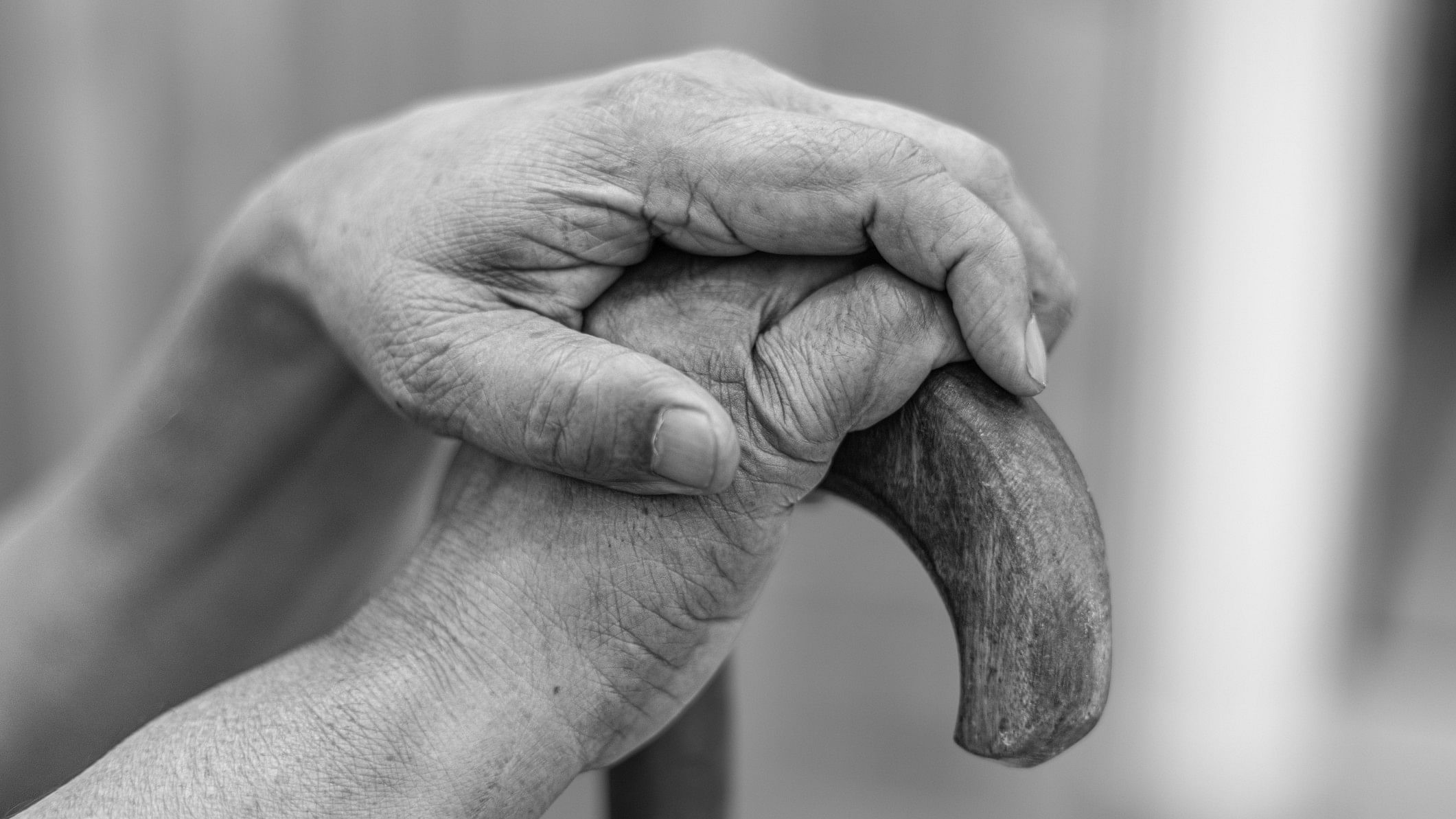
Representative image showing hands of an old person.
Credit: iStock Photo
India is ageing and urbanising rapidly. Demographic and socio-economic factors are restructuring the population across time, space, and place. By 2036, urban India is expected to house 40 per cent of the population, and by 2050, the older adult population will likely double to around 20 per cent.
The 2011 Census recorded 71 million older women and 67 million older men, with projections showing that by 2050, the number of older women will exceed older men by 18.4 million.
Women tend to outlive their husbands either due to increased longevity or the age gap between spouses. While men often benefit from spousal support into old age, wives and widows frequently have to fend for themselves, rely on filial support, work well into old age, or depend on government support.
Unfortunately, women’s longer lives are often spent in poor health, with age-related disabilities, caregiving burdens, illiteracy, poverty, increased financial dependency, social marginalisation, and exposure to elder abuse and gender discrimination.
While the feminisation of ageing is evident, what is less apparent is the phenomenon of older women living alone for extended periods post-widowhood.
Around 15 million older adults live alone in India, most of whom are women.
The distinction between choosing to live alone, as seen in developed contexts, and being somewhat compelled to live alone is significant, and raises concerns.
Unlike in the West, India is ageing before a significant proportion of its population has had the opportunity to secure gainful employment for long periods and save for old age.
Old-age poverty is a pressing issue both in urban and rural India, demanding policy attention.
While most developing countries expect older adults to support themselves through work or pension savings or receive filial support from their families, current public policies often fail to incentivise filial support mechanisms or guarantee meaningful and extended work lives for older adults.
A handful of countries have opted for universal pensions, but India has relied on means-tested, non-contributory pensions.
However, concerns about coverage extent and the diminished real value of pensions due to inflation are legitimate.
The age threshold for widow pensions, currently at 65 years, should align with the life expectancy within the below poverty line (BPL) income group and accommodate the years of life lost due to cumulative disadvantage.
While pension amounts may be critically low to cover basic needs, most elderly continue to work as long as they can, often in precarious conditions, with the current policy offering little respite to the frail.
The premises of urban aging—one being that filial responsibility can provide for the needs of the elderly—are in question as India witnesses a gradual erosion of the traditional joint family system where the younger generation is geographically dispersed from their homes, resulting in a shift to nuclear families or by leaving older parents behind.
Second, even when older parents migrate to join their adult children in urban spaces, the availability of filial support is in no way assured as adult children are grappling to find a stable income footing and are wedged between supporting parents’ requirements and their own family needs.
The third premise is that if older adults work late, beyond the legal retirement age, then they would be able to self-support themselves. While this seems like a convincing argument at first glance, it is oblivious to reality.
Finding opportunities post-retirement age is a bigger challenge as the employment market seems unable to fully utilise the demographic dividend.
While older men may find gainful employment post-retirement, older women tend to lose out and are often compelled to opt for work that is closer home, usually one that is low-paying and irregular.
A fair question to ask here is: Can existing public infrastructure, transport solutions, societal norms, and market conditions enable older women to find and access gainful employment? The job market is obviously unable to reciprocate to the cumulative disadvantages a woman endures through her life course and the fact that she brings far fewer resources to the table as compared to men.
The urban ageing landscape is therefore mired within changing socio-economic circumstances and complexities.
The lack of gender-sensitive and age-friendly programming in urban landscapes for public infrastructure tends to allow undetected inequalities to become further entrenched, pervasive, and longer lasting.
Public policy efforts are therefore needed to mitigate the risks that older adults, especially women, face, to reduce or remove the burden of healthcare expenditure and create safer and more supportive environments for healthy ageing – where both older men and women will be able to lead extended work lives.
The onus has to be on designing age-sensitive and gender-responsive policies with policy coherence that target the root causes of age and gender-related inequalities within society.
(Allen P Ugargol is an associate professor of practice, public policy, and Ashitha Vijayan is an academic associate, Centre for Public Policy, IIM Bangalore)